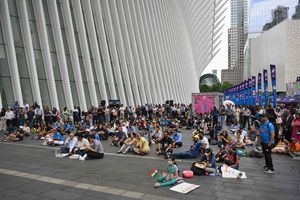India’s sporting prowess received a significant boost with the country winning the T20 Cricket World Cup, ending a 13-year drought. What made this World Cup unique was the fact that it was co-hosted by the United States of America for the very first time. The inclusion of the US adds a remarkable dimension, heralding a new era of expanding cricket diplomacy and the growing influence of Indic soft power on the global stage.
While the road ahead for cricket in America remains challenging, this momentum beyond traditional strongholds not only diversifies the sport’s global presence, but also bolsters the soft power potential of India, whose cultural and sporting influence continues to resonate on the world stage. And that influence, in terms of cricket, is momentous. The Board of Control for Cricket in India (BCCI) stands as a juggernaut in the world of cricket, propelled by staggering revenues, primarily from the Indian Premier League (IPL).
While cricket remains the crown jewel, India’s sporting ambitions are not limited to one sport. The country is making significant strides in other arenas, reflecting a broader vision to enhance its global sporting influence. The announcement of India’s bid for the 2036 Olympics exemplifies this ambition. India aims to introduce indigenous sports such as yoga, kho kho, and kabaddi, highlighting its rich cultural heritage and promoting lesser-known disciplines on a global platform. During the upcoming Paris Olympics, Indian sports administrators will lobby for the inclusion of these sports, advocating for their recognition and integration into the Olympic framework. This move is part of a strategic plan presented by the Sports Authority of India’s Mission Olympic Cell (MOC), which outlines measures to strengthen India’s bid and promote its indigenous sports. The proposal also includes chess, T20 cricket, and squash, sports where India has demonstrated considerable strength and potential.
India needs to prioritise investing in athletes of the future to ensure that our legacy in sports is sustained and strengthened. Investing in sports in India requires a multifaceted approach that addresses infrastructure, grassroots development, and institutional support. The government must prioritise building state-of-the-art sports facilities across the country. This includes not only stadiums and training centres but also local sports clubs and community grounds accessible to all. Investing in modern equipment and technology will further help nurture talent from a young age, ensuring athletes have access to world-class resources right from the beginning of their sporting journeys.
Enhancing the role of physical education in schools is crucial. Introducing comprehensive sports curricula and incentivising participation can instil a sporting culture early on. This approach not only promotes physical fitness but also identifies and nurtures talented youngsters who could potentially excel in various sports. Fostering a supportive ecosystem for athletes is essential. This involves improving sports governance, enhancing transparency, and providing adequate financial support through scholarships, sponsorships, and rewards for achievements. Strengthening sports science and sports medicine facilities will also play a key role in ensuring the holistic development and well-being of athletes.
Fostering public-private partnerships in sports can significantly augment India’s sporting landscape, enhancing sporting infrastructure, training facilities, and grassroots development programmes. By collaborating with private entities, the government can leverage additional resources, expertise, and innovative approaches to expand sports participation, improve coaching standards, and host international events.
The rise of sports in India reflects its evolving global identity, driven by robust government initiatives and extensive infrastructure development. Athletes such as Neeraj Chopra in javelin, P.V. Sindhu and Saina Nehwal in badminton, and Bajrang Punia and Vinesh Phogat in wrestling stand as inspiring examples of this transformation. As these new role models shine and cultural attitudes shift towards embracing sports as a career, the momentum must be sustained.
This journey from a cricket-centric nation to a sporting powerhouse holds the promise of a future where Indian athletes excel internationally. With strong national support and continued investment, this cycle of nurturing talent and promoting excellence is set to propel Indian sports and soft power to greater heights.
Author is G20 Sherpa. He is ex-CEO, NITI Aayog.


